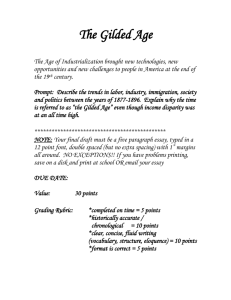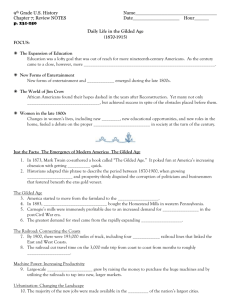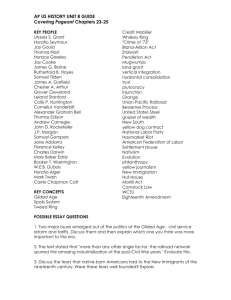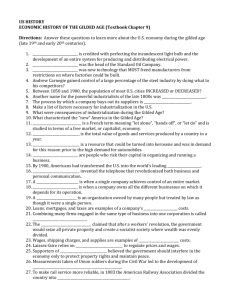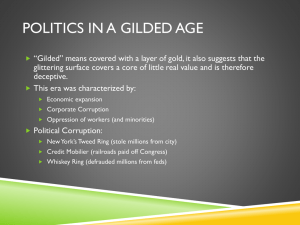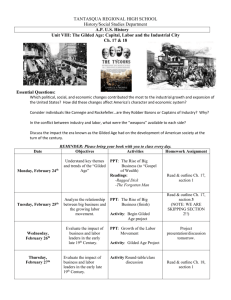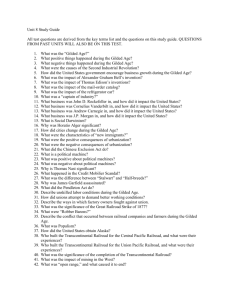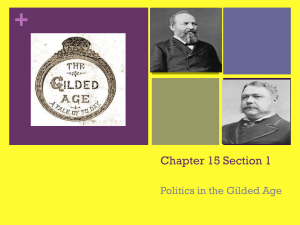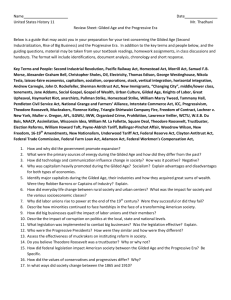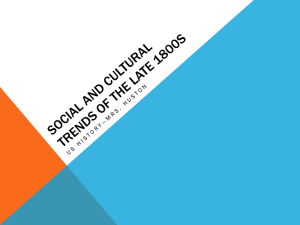Video Scaffold
advertisement
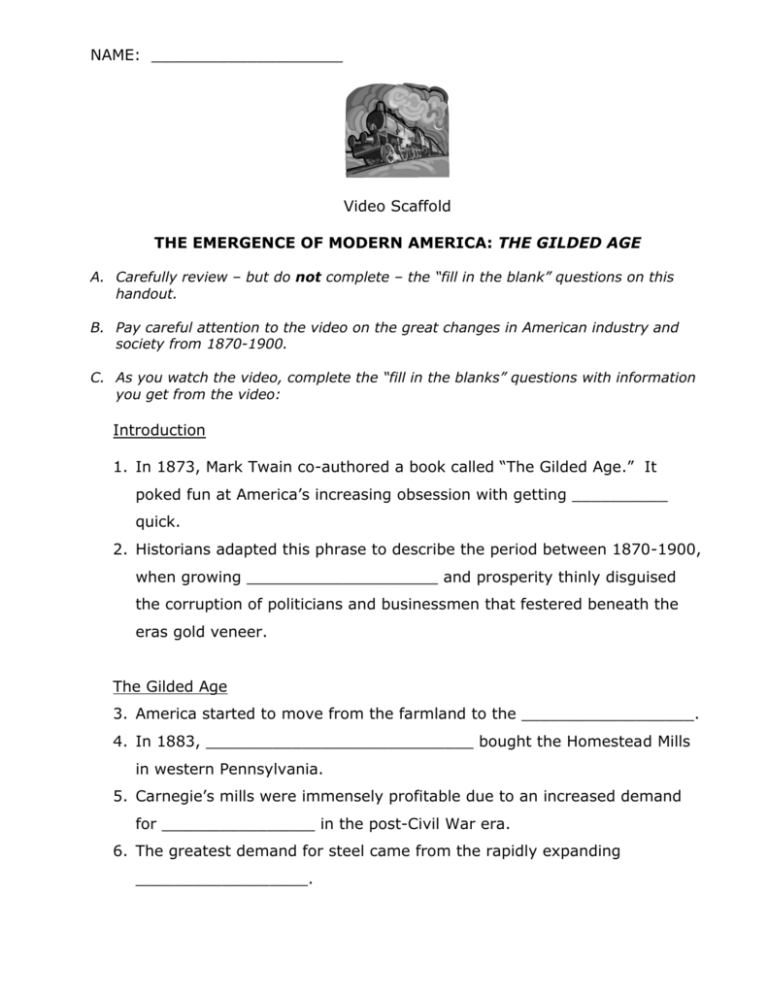
NAME: ____________________ Video Scaffold THE EMERGENCE OF MODERN AMERICA: THE GILDED AGE A. Carefully review – but do not complete – the “fill in the blank” questions on this handout. B. Pay careful attention to the video on the great changes in American industry and society from 1870-1900. C. As you watch the video, complete the “fill in the blanks” questions with information you get from the video: Introduction 1. In 1873, Mark Twain co-authored a book called “The Gilded Age.” It poked fun at America’s increasing obsession with getting __________ quick. 2. Historians adapted this phrase to describe the period between 1870-1900, when growing ____________________ and prosperity thinly disguised the corruption of politicians and businessmen that festered beneath the eras gold veneer. The Gilded Age 3. America started to move from the farmland to the __________________. 4. In 1883, ____________________________ bought the Homestead Mills in western Pennsylvania. 5. Carnegie’s mills were immensely profitable due to an increased demand for ________________ in the post-Civil War era. 6. The greatest demand for steel came from the rapidly expanding __________________. The Railroad: Connecting the Coasts 7. By 1900, there were 193,000 miles of track, including four ____________ railroad lines that linked the East and West Coasts. 8. The railroad cut travel time on the 3,000 mile trip from coast to coast from months to roughly ___________________. Machine Power: Increasing Productivity 9. Large-scale ____________________ grew by raising the money to purchase the huge machines and by utilizing the railroads to tap into new, larger markets. Urbanization: Changing the Landscape 10. The majority of the new jobs were made available in the _________ of the nation’s largest cities. 11. City populations _________________ as a result. 12. The flood of ___________________ entering the country also made up a large part of the new workforce. 13. But much of the “American Dream” was denied to the immigrants, most of whom lived in poverty in the cities’ _____________. African Americans in the Gilded Age 14. By the late 1890s, African Americans were stripped of most of the ___________ that were promised them after the Civil War. 15. In 1896, the Supreme Court ruled in the case of Plessy v. Ferguson. The ruling stated that ______________ but equal facilities and accommodations were legal under the Constitution. The Conquest of the West 16. Those Native Americans who survived were forced to live on _____________________. The Victorians 17. These American “Victorians” filled their houses with ornate furniture and knickknacks, believing their new found wealth could buy them everything, including _______________. Seeking Reform 18. More and more workers were interested in the reforms that ____________ strove to achieve. 19. Whenever possible, unions were ___________________ and their leaders blacklisted. 20. Many Americans grew suspicious of corporations and businessmen, fearing price-fixing by all powerful monopolies. They saw the Carnegies and Rockefellers of the world as ___________________ who fixed prices and stole from honest, hard-working Americans to increase their personal fortunes. Gilded Politics 21. Corruption ran rampant in the Gilded Age and extended to the highest levels of ____________________. The American Empire 22. But a new frontier was just beginning, as economic prospects around the world lead businessmen to seek new _______________ beyond the borders of the United States. Innovations of the Gilded Age 23. The United States would also be impacted by four innovations of the Gilded Age: the electric light, motion picture, ________________, and automobile.
